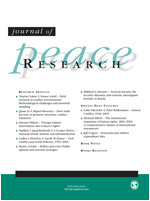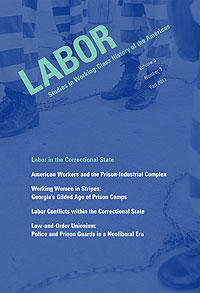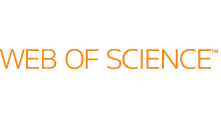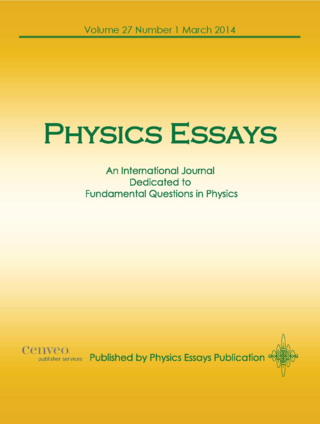A citation index is a kind of bibliographic index, an index of citations between publications, allowing the user to easily establish which later documents cite which earlier documents. A form of citation index is first found in 12th-century Hebrew religious literature. Legal citation indexes are found in the 18th century and were made popular by citators such as Shepard's Citations (1873). In 1961, Eugene Garfield's Institute for Scientific Information (ISI) introduced the first citation index for papers published in academic journals, first the Science Citation Index (SCI), and later the Social Sciences Citation Index (SSCI) and the Arts and Humanities Citation Index (AHCI). American Chemical Society converted its printed Chemical Abstract Service into internet-accessible SciFinder in 2008. The first automated citation indexing was done by CiteSeer in 1997 and was patented. Other sources for such data include Google Scholar, Microsoft Academic, Elsevier's Scopus, and the National Institutes of Health's iCite.
An emerging market is a market that has some characteristics of a developed market, but does not fully meet its standards. This includes markets that may become developed markets in the future or were in the past. The term "frontier market" is used for developing countries with smaller, riskier, or more illiquid capital markets than "emerging". As of 2006, the economies of China and India are considered to be the largest emerging markets. According to The Economist, many people find the term outdated, but no new term has gained traction. Emerging market hedge fund capital reached a record new level in the first quarter of 2011 of $121 billion. Emerging market economies’ share of global PPP-adjusted GDP has risen from 27 percent in 1960 to around 53 percent by 2013. The ten largest emerging economies by nominal GDP are 4 of the 9 BRICS countries along with Mexico, South Korea, Indonesia, Turkey, Saudi Arabia, and Poland. The inclusion of South Korea, Poland, and sometimes Taiwan are questionable given they are no longer considered emerging markets by the IMF and World Bank If we ignore those three, the top ten would include Argentina and Thailand.

The Journal of Peace Research is a bimonthly peer-reviewed academic journal that publishes scholarly articles and book reviews in the fields of peace and conflict studies, conflict resolution, and international security. It was established by Johan Galtung in 1964 and emerged as a leading journal in the field of peace and conflict studies and International Relations under the editorship of Nils Petter Gleditsch. The current editor-in-chief is Scott Gates.

SCMS Cochin School of Business, formerly School of Communication and Management Studies, is a management institute located at Kochi, India. The institute is located about 12 km (7.5 mi) from Ernakulam railway station. The school was established in 1976 by G. P. C. Nayar, under the trust Prathap Foundation for Education and Training. It is part of the SCMS Group of educational institutions. SCMS PGDM is very famous in south India. It is rated as the best business school in Kerala after IIM-K since many years. The school provides PGDM with electives in marketing, finance, retail, human resources, banking and insurance, and system and operations.

Labor: Studies in Working-Class History is a quarterly peer-reviewed academic journal covering the history of the labor movement in the United States, including non-union agricultural work, slavery, unpaid and domestic labor, informal employment, and other topics. While the primary focus is on the United States, the journal also covers labor movements in North and South America as well as transnational comparisons that shed light on the American labor movement. It is the official journal of the Labor and Working-Class History Association and is published by Duke University Press. The editor-in-chief is Julie Greene who took over the role when the founding editor, Leon Fink, stepped down in July 2023.

The Web of Science is a paid-access platform that provides access to multiple databases that provide reference and citation data from academic journals, conference proceedings, and other documents in various academic disciplines. Until 1997, it was originally produced by the Institute for Scientific Information. It is currently owned by Clarivate.
The economic development in India followed socialist-inspired politicians for most of its independent history, including state-ownership of many sectors; India's per capita income increased at only around 1% annualised rate in the three decades after its independence. Since the mid-1980s, India has slowly opened up its markets through economic liberalisation. After more fundamental reforms since 1991 and their renewal in the 2000s, India has progressed towards a free market economy. The Indian economy is still performing well, with foreign investment and looser regulations driving significant growth in the country.
Income in India discusses the financial state in India. With rising economic growth and prosperity, India's income is also rising rapidly. As an overview, India's per capita net national income or NNI was around Rs. 98,374 in 2022-23. The per-capita income is a crude indicator of the prosperity of a country. In contrast, the gross national income at constant prices stood at over 128 trillion rupees. The same year, GRI growth rate at constant prices was around 6.6 percent. While GNI and NNI are both indicators for a country's economic performance and welfare, the GNI is related to the GDP or the Gross Domestic Product plus the net receipts from abroad, including wages and salaries, property income, net taxes and subsidies receivable from abroad. On the other hand, the NNI of a country is equal to its GNI net of depreciation.

Corruption in India is an issue which affects economy of central, state, and local government agencies. Corruption is blamed for stunting the economy of India. A study conducted by Transparency International in 2005 recorded that more than 62% of Indians had at some point or another paid a bribe to a public official to get a job done. In 2008, another report showed that about 50% of Indians had first hand experience of paying bribes or using contacts to get services performed by public offices. In Transparency International's 2023 Corruption Perceptions Index, which scored 180 countries on a scale from 0 to 100, India scored 39. When ranked by score, India ranked 93rd among the 180 countries in the Index, where the country ranked first is perceived to have the most honest public sector. For comparison with worldwide scores, the best score was 90, the worst score was 11, and the average score was 43. For comparison with regional scores, the highest score among the countries of the Asia Pacific region was 85, the lowest score was 17, and the average score was 45. Various factors contribute to corruption, including officials siphoning money from government social welfare schemes. Examples include the Mahatma Gandhi National Rural Employment Guarantee Act and the National Rural Health Mission. Other areas of corruption include India's trucking industry, which is forced to pay billions of rupees in bribes annually to numerous regulatory and police stops on interstate highways.
The Sedition Committee, usually known as the Rowlatt Committee, was a committee of inquiry appointed in 1917 by the British Indian Government with Sidney Rowlatt, an Anglo-Egyptian judge, as its president, charged with evaluating the threat posed to British rule by the revolutionary movement and determining the legal changes necessary to deal with it.
Gender inequality in India refers to health, education, economic and political inequalities between men and women in India. Various international gender inequality indices rank India differently on each of these factors, as well as on a composite basis, and these indices are controversial.
Israel Studies is a triannual peer-reviewed academic journal covering the history, politics, society, and culture of the modern state of Israel. It was established in 1996 S. Ilan Troen as founding editor(Brandeis University). It is published by the Indiana University Press. The editors-in-chief are Arieh Saposnik, Natan Aridan, and S. Ilan Troen.

South Asia is the southern subregion of Asia, which is defined in both geographical and ethnic-cultural terms. As commonly conceptualized, the modern states of South Asia include Afghanistan, Bangladesh, Bhutan, India, Maldives, Nepal, Pakistan, and Sri Lanka. South Asia borders East Asia to the northeast, Central Asia to the northwest, West Asia to the west and Southeast Asia to the east. Topographically, it is dominated by the Indian subcontinent and is bounded by the Indian Ocean in the south, and the Himalayas, Karakoram, and Pamir Mountains in the north.

Physics Essays is a quarterly journal covering theoretical and experimental physics. It was established in 1988 and the editor-in-chief is Emilio Panarella.
The Indian Journal of Gender Studies is a triannual peer-reviewed academic journal with a focus on a holistic understanding of society, particularly gender. The editors-in-chief are Malavika Karlekar and Leela Kasturi. The journal is published by SAGE Publications on behalf of the Indian Council of Social Science Research.
The Emerging Sources Citation Index (ESCI) is a citation index produced since 2015 by Thomson Reuters and now by Clarivate. According to the publisher, the index includes "peer-reviewed publications of regional importance and in emerging scientific fields".
India Quarterly is a peer-reviewed journal. It functions as a forum for discussion on matters concerning international relations and national foreign policies. It is published quarterly by SAGE Publications in association with Indian Council of World Affairs.
The Journal of Creative Communications is published three times a year by SAGE Publications in collaboration with MICA, Shela, Ahmedabad, India. It is an international double-blind peer-reviewed journal.
The South Asia Research is a triannual peer-reviewed academic journal covering the history, politics, law, economics, sociology, visual culture, languages, and literature of the countries in South Asia, shaped by the history of the Indian subcontinent. It is published by SAGE Publications.

Latin American Politics and Society is a quarterly peer-reviewed academic journal of Latin American studies. It is published by Cambridge University Press on behalf of the Center for Latin American Studies of the University of Miami and the editor-in-chief is Alfred P. Montero.







